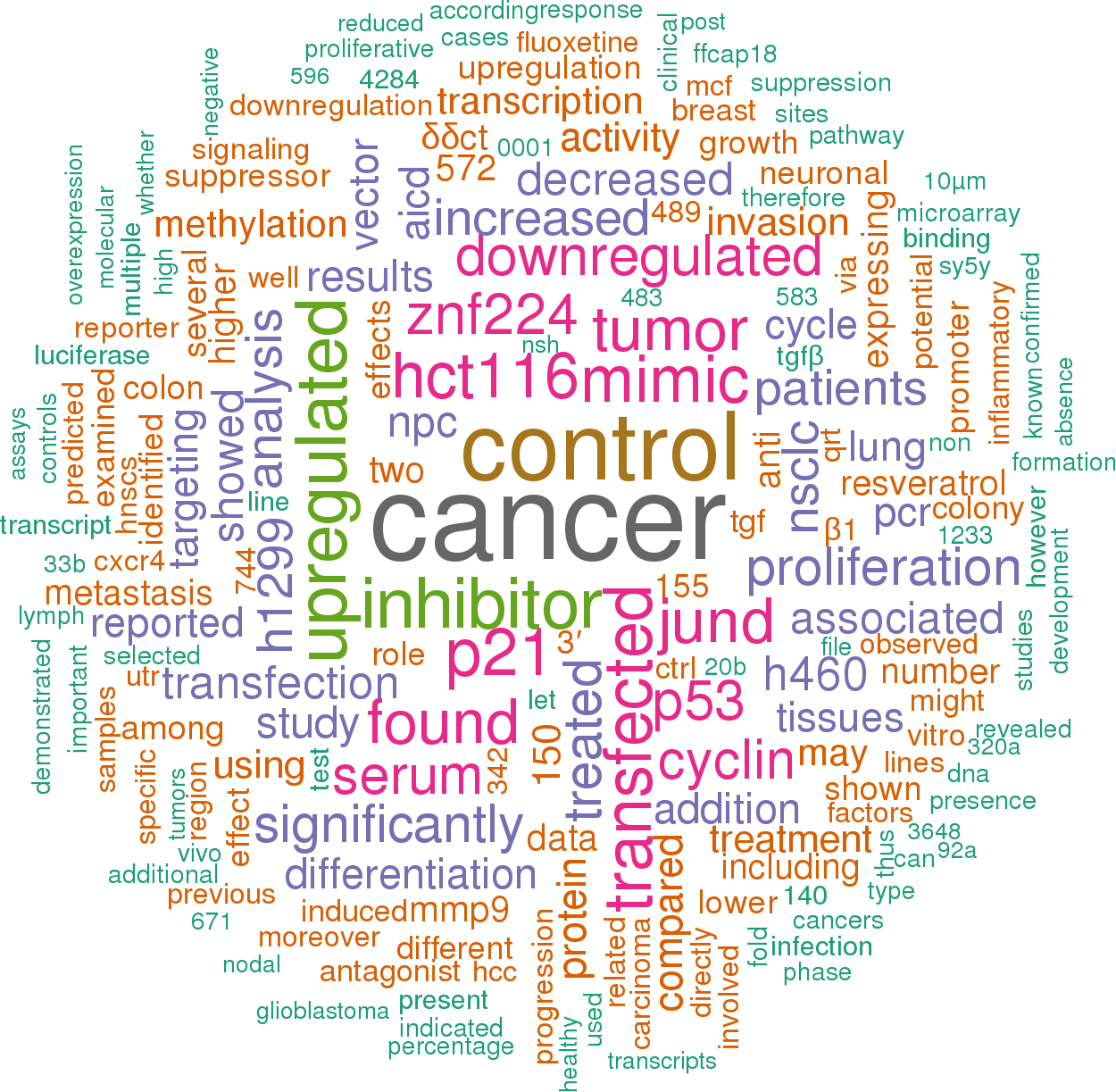Accession
MI0003672
Symbol
HGNC:
MIR663A
Description
Homo sapiens
hsa-mir-663a precursor miRNA mir-663
Gene
family?
family?
RF00957;
mir-663
Literature search

75 open access papers mention hsa-mir-663a
(535 sentences)
(535 sentences)
Sequence
1031
reads,
13
reads per million, 74 experiments
ccuuccggcgucccAGGCGGGGCGCCGCGGGACCGCccucgugucuguggcggugggaucccgcggccguguuuuccugguggcccggccaug
....((((.((((((((.((.(((((((((((((((((........).))))).....)))))))).))).))..))))).))))))).....
....((((.((((((((.((.(((((((((((((((((........).))))).....)))))))).))).))..))))).))))))).....
Structure
-ccuu c - -C G - ----- - ucg
ccgg guc ccAGG GG GCG CCGCGGGA CCGCc c u
|||| ||| ||||| || ||| |||||||| ||||| |
ggcc cgg ggucc uu ugc ggcgcccu ggcgg g g
guacc - u uu g c agggu u ucu
Annotation confidence
Low
Do you think this miRNA is real?
Genome context
chr20: 26208186-26208278 [-]
Disease association
hsa-mir-663a is associated with one or more human diseases in the Human microRNA Disease Database
| Disease | Description | Category | PubMed ID |
|---|
Mature hsa-miR-663a
| Accession | MIMAT0003326 |
| Description | Homo sapiens hsa-miR-663a mature miRNA |
| Sequence | 15 - AGGCGGGGCGCCGCGGGACCGC - 36 |
| Evidence |
experimental
SAGE [1] |
| Database links |



|
| Predicted targets |



|
References
|



